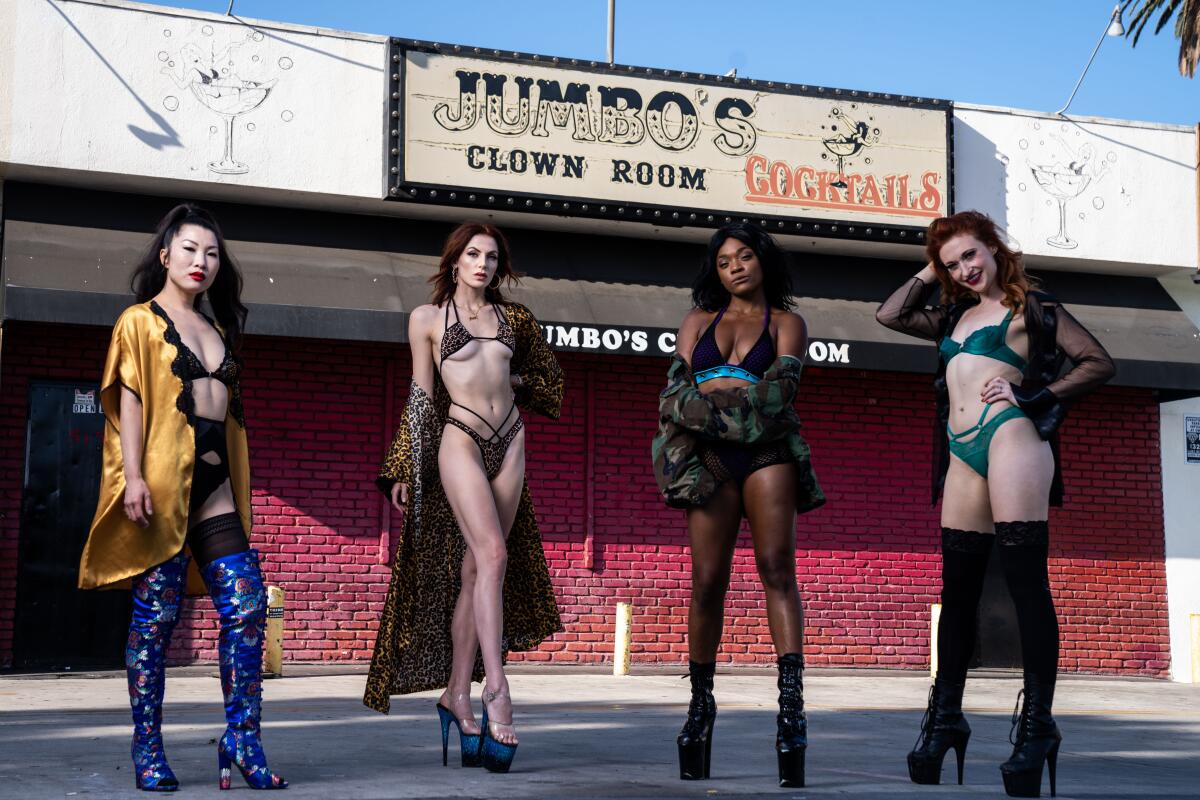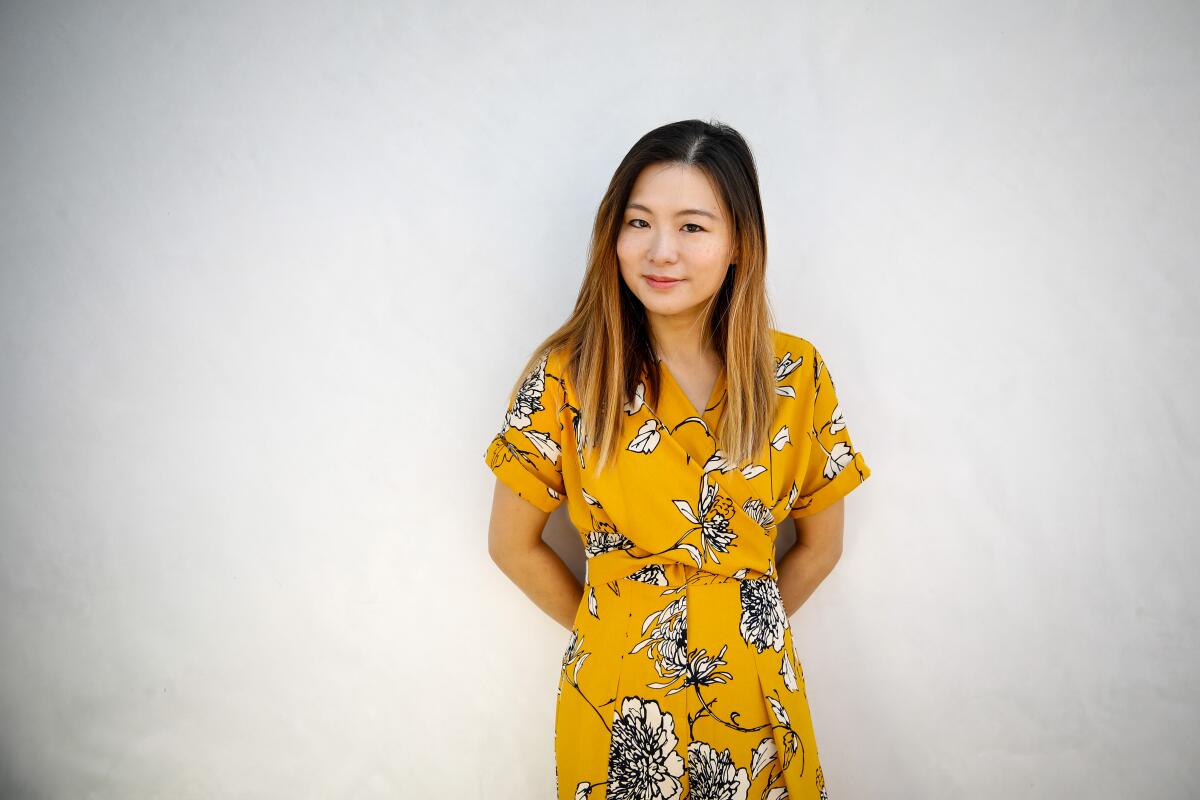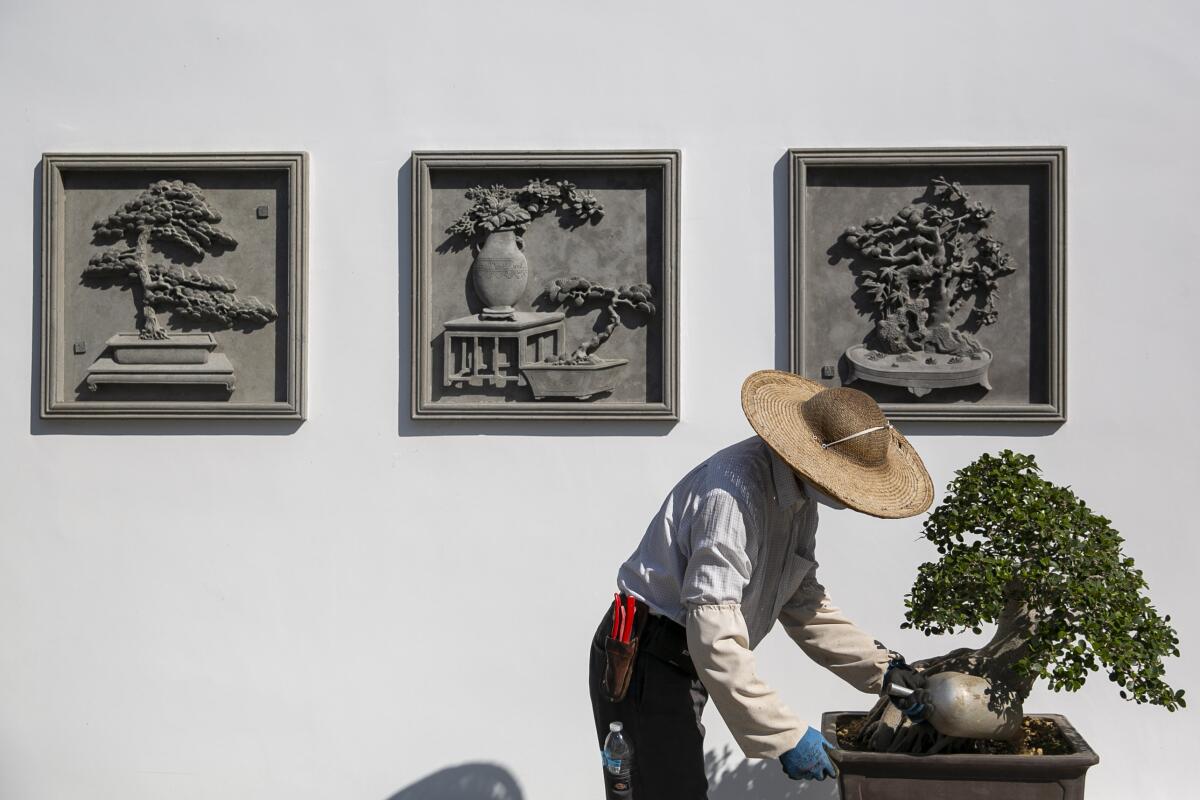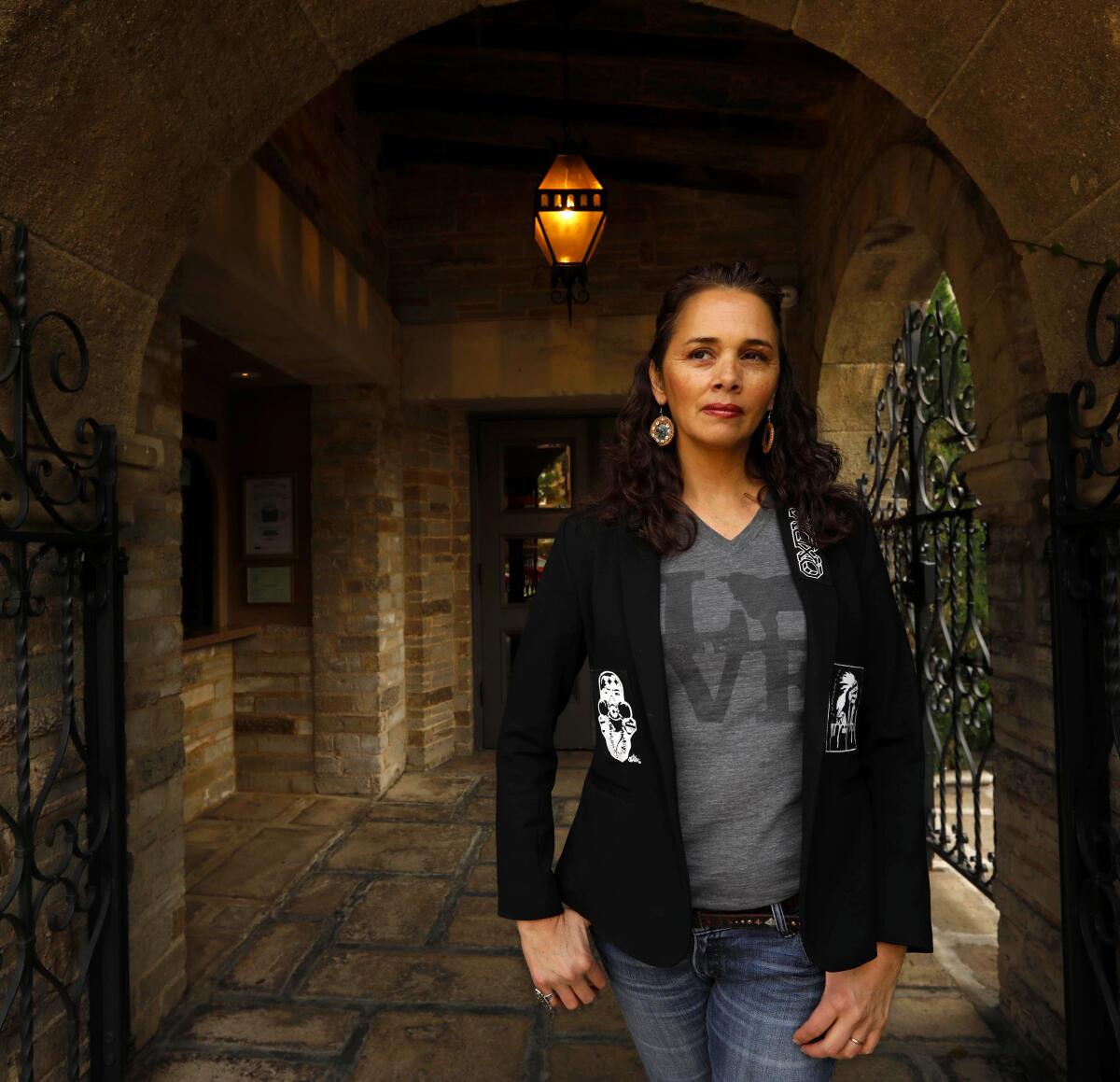Newsletter: Essential Arts: Cruising the Sunset Strip with Ed Ruscha
- Share via
I am fully in the thrall of Netflix’s “Taco Chronicles,” aided and abetted by Javier Cabral’s wondrous piece of service journalism for L.A. Taco: a guide to all the spots in L.A. you can find the styles of tacos featured in the show. I’m Carolina A. Miranda, staff writer at the Los Angeles Times, and I’m currently cleaning cochinita pibil off my keyboard. I may also have some essential culture news:
Take a little trip
Ed Ruscha’s “Every Building on the Sunset Strip,” from 1966, is one of the rare works of art to embody the truly unseeable nature of Los Angeles. An accordion-style book that folds out to a length of 25 feet, it offers a linear, deadpan catalog of, quite literally, every building on the north and south sides of the Sunset Strip. It is a work of art that is also a book, a book that is also art, an object that could be described as the prescient, physical precursor of Google Street View. Like the city that inspired it, you can admire its magnitude from afar, but the only way to truly see “Every Building on the Sunset Strip” is to get in close, for it is then that Los Angeles becomes legible.
Ruscha told me during an interview for a story on his 2013 show at the Getty that in making the work he’d been intrigued by the horizontal nature of L.A.’s streetscape, with its boulevards that unfurl “like ribbons.” He was also intrigued by L.A. architecture, something that stood out to him when he landed here from his native Oklahoma.
“I came from this kind of stoic background visually, then I come to California and I see this jazzy, swank take on life, with their jazzy names on the apartment houses and all of these buildings saying, ‘Look at me!’” he said. “You could say it was egotistical architecture.... I began to observe it and it got under my skin.”
It was from that interest that projects such as “Every Building on the Sunset Strip” emerged. And it has been highly influential to countless other artists since.
New York artist Amy Park, for example, created a series of watercolor paintings of Ruscha’s book that were shown at Kopeikin Gallery in 2016. In creating the work, which come together into a continuous 110-foot installation, she tells me she began to feel that she had “entered” Ruscha’s process “and the architecture of Los Angeles.” The experience, she says, is “much like walking down the Sunset Strip itself.”
As maniacal as “Every Building on the Sunset Strip” is as a work of art, it is actually just one tiny piece of a much larger project for Ruscha. For more than four decades, the artist has repeatedly photographed the entire length of Sunset Boulevard from downtown to the beach — some 65,000 pictures in total. And as my colleague Deborah Vankin reports, those photos now make up a wild new digital project that was just unveiled by the Getty Research Institute.
Titled “12 Sunsets: Exploring Ed Ruscha’s Archive,” the site allows viewers to navigate the images, which have been strung together in sequence by decade — making for a compelling portrait of Sunset Boulevard over time.
“It’s not just capturing the buildings that we’re all so familiar with,” Ruscha tells Vankin, “but the curbs and the drainage channels and power poles and everything else — municipal concrete — that makes the whole study worthwhile. Because you can go back and compare: ‘Oh, there’s that tree or Mexican fan palm and look what size it is today.’ I just look at it like: ‘This is our destiny.’”
Jumbo’s online
The pandemic has shut down dance venues of all sorts. Among them: the beloved Jumbo’s Clown Room in East Hollywood. The Times’ Makeda Easter reports that some of the venue’s dancers wasted no time in putting together twice-weekly virtual versions under the moniker Cyber Clown Girls. The enterprise, she writes, has given the dancers “a new sense of agency and empowerment in an industry that is notorious for taking advantage of women.”

Easter also writes about “45 Lies 2020,” a national campaign of rappers, poets and playwrights who are sending a message about President Trump’s myriad falsehoods. The concept: each performer picks a lie and creates a poem or rap calling out the disinformation, then challenges two other artists to do the same. Says Marc Bamuthi Joseph, who organized the project, “We want to enliven folks who have become numb, who don’t necessarily trust their information sources.”
Classical notes
The Los Angeles Master Chorale recently pledged to devote 50% of all future programming to work by composers from historically marginalized groups. To help see that pledge through will be Jenny Wong, who has just assumed the new role of associate artistic director at the organization. (She was previously an assistant conductor.) The Hong Kong native is the rare woman of color on a conductor’s podium. “The reason I get to be at a podium in Disney Hall is that there were people who came before me who worked hard, with great intention, to make that possible for me,” she tells Jessica Gelt.

Mark Swed is still deep listening — and this week he is turning his ears to Felix Mendelssohn’s Octet. “Mendelssohn was 16 when he produced this truest embodiment of unbridled, anything-is-possible youth,” writes Swed. “Unlike a document — film, painting, photograph, printed or even spoken word — it is neither youth preserved nor mimicked but, in each performance, youth reborn.” When I was 16 I held a job at Sizzler.
Find the entire “How to Listen” series right here.
At the museums
Earlier this week, Christopher Knight reported that the Palm Springs Art Museum was considering deaccessioning a major work by Helen Frankenthaler. The move came after deaccessioning rules were loosened by the Assn. of Art Museum Directors because of the pandemic’s financial toll. In June, an open letter posted by a former museum employee alleged that the museum had failed on issues of equity. “That makes the planned sale of a work by Frankenthaler, a prominent female artist, especially surprising,” writes Knight.
Now the decision is official. Frankenthaler‘s painting, “Carousel,” 1979, will go up for auction at Sotheby’s on Oct. 28.
Enjoying this newsletter? Consider subscribing to the Los Angeles Times
Your support helps us deliver the news that matters most. Become a subscriber.
NBA team owner Tom Gores is stepping down from the board of LACMA after calls for his ouster over his investment firm’s ownership of a prison telephone company called Securus, reports The Times’ Laurence Darmiento. A letter released by his firm stated: “Paraphrasing a salient question at last week’s board meeting: ‘Okay Tom, we appreciate your efforts to ‘take the hill’ and reform Securus. But why does LACMA have to take the hill with you?’ The simple answer is: You don’t.”
A group of Latinx-focused cultural organizations — LA Plaza de Cultura y Artes, Self Help Graphics, the Museum of Latin American Art, the Vincent Price Art Museum and SPARC — have teamed up to form the Latinx Arts Alliance, an organization that will help support and promote Latinx cultural events across L.A. “Latinx cultural organizations and POC cultural organizations are not the mainstream, not well-funded and systemically undercapitalized,” Self Help’s Betty Avila tells Deborah Vankin, “but when we come together, we’re amplifying our voice.”
Contributor Scarlet Cheng profiles Che Zhao Sheng, the landscape artist behind the magnificent penjing garden at the Huntington. (Penjing are miniaturized trees, arranged in the Chinese style, similar to the Japanese practice of bonsai.) Sheng, who immigrated to the U.S. from China in 1986, studied the exacting technique in his native country. “Penjing takes time, a lot of time,” he says. “It can take 20, 30 years, like raising a child.”

Awards season
The MacArthur Foundation has announced its class of 21 new fellows — the so-called “genius” grants. This year, they include performer Ralph Lemon, cultural theorist Fred Moten, USC historian Natalia Molina and playwright Larissa FastHorse, whose works, such as “The Thanksgiving Play,” center the Indigenous experience.
A former dancer, FastHorse told The Times last year why she got into writing: “My gift is as a translator. What I can do well is take Indigenous contemporary experiences and translate them for white audiences because that’s what we have.”

This year’s Nobel Prize in literature went to Louise Glück, a former U.S. poet laureate. The Swedish Academy said in its Thursday announcement that the award honors “her unmistakable poetic voice that with austere beauty makes individual existence universal.” News of the award caught Glück unaware — and in desperate need of morning coffee.
Dorany Pineda rounds up some of the author’s essential works. And Dwight Garner of the New York Times comes through with an appraisal: “One of the things to love about Glück’s poetry is that, while her work contains many emotional registers, she is not afraid to be cruel — she confronts the monsters in herself, and in others.”
Plays and players
Poet Javon Johnson has produced a new spoken-word commission titled “Still.” It was created as part of the Pasadena Playhouse‘s new digital platform, PlayhouseLive, as a response to the killing of George Floyd. The work is “a knockout punch,” writes contributor Margaret Gray, offering meticulous plays on structure and language.
Times theater critic Charles McNulty tuned into “The Great Work Begins: Scenes from Angels in America,” a one-hour livestream featuring scenes from Tony Kushner‘s prize-winning play as a benefit for AmFar. The show (on view through Monday) features performances from a “dream cast” that includes Glenn Close, Patti LuPone, Brian Tyree Henry and more. “Quarantine has proved a springboard for creative experimentation and nontraditional casting,” writes McNulty. “There’s a research and development value to this rendition of ‘Angels in America’ that should inform future productions of the modern classic.”
McNulty also checks out the latest from the Geffen Playhouse’s Stayhouse series: “Inside the Box,” by David Kwong, who is also a crossword designer. The show explores the nature of puzzles as well as their history. It “will tickle the frontal lobes of puzzle fanatics,” writes McNulty. “But despite the cognitive cleverness, this unfailingly amiable show hasn’t cracked the secret code of theater.”
Make the most of L.A.
Get our guide to events and happenings in the SoCal arts scene. In your inbox once a week.
You may occasionally receive promotional content from the Los Angeles Times.
Game critic Todd Martens, in the meantime, attended a participatory performance titled “Fire Season” at Paramount Ranch. Organized by the immersive theater company Capital W, Martens reports that the work, which involves viewers being loosed on the ranch with an FM transmitter and backpacking chair, feels “decidedly timely, reflective of an era when the loss of life can feel overwhelming to the point of paralyzing.”
Essential happenings
Matt Cooper comes through with all the latest online happenings, including deets on the hour-long “Angels in America” production and the virtual CelloBello Gala, which will feature appearances by Yo-Yo Ma, Sheku Kanneh-Mason and Alisa Weilerstein.
Cooper also rounds up nine events you can do IRL, including a drive-in screening of a new dance film featuring companies such as Westside Ballet, Barak Ballet and Ballet Foklórico de Mayo.
Galleryplatform.la put a fresh crop of new works up this week and I was intrigued by a new video by L.A. artist Joel Kyack, presented by François Ghebaly. “TIME TIME TIME,” 2020, is a nearly 12-minute video that dwells on the more material aspects of time. What does it look like to watch time pass — say, in an hourglass? Or what does it sound like — symbolically — to mark the beginnings and ends of all human life on earth?
The pandemic has screwed up our understanding of time. (The presidential debate was 10 years ago, right?) Let Kyack mess with it further.
You can find the video here. (Note: it contains graphic violence, albeit of the feature film sort.)
While on the site, be sure to check out this pandemic-perfect series of works pulled together by curator Ali Subotnick.
Passages
Kenzo Takada, the fashion designer known for bold, brilliantly-hued garments and “mischievous sense of fun,” has died from complications of COVID-19 at the age 81. “Fashion is not for the few — it is for all people,” he said in 1972. “It should not be too serious.”
In other news
— A&M Records founder Jerry Moss and his wife Tina have donated $25 million to the Music Center for free outdoor concerts.
— Broadway theaters will remain closed at least through May.
— “It’s not about the artist, it’s about us.” National Gallery of Art director Kaywin Feldman talks about why the Philip Guston show was postponed.
— A portfolio of artists from Jenna Wortham and Kimberly Drew’s “Black Futures.”
— Author Lynell George‘s favorite California books.
— The architecture profile everybody’s reading in L.A.: Dana Goodyear‘s profile of Peter Zumthor in the New Yorker. There’s a lot of woe-is-me-I-am-a-misunderstood-genius happening here.
— A topping out ceremony was held on Tuesday for the new Orange County Museum of Art, designed by Morphosis.
— The restoration of Houston’s Rothko Chapel, led by New York-based Architecture Research Office, is now complete — and a skylight is bringing new life to the paintings.
And last but not least ...
The biggest entertainment stories
Get our big stories about Hollywood, film, television, music, arts, culture and more right in your inbox as soon as they publish.
You may occasionally receive promotional content from the Los Angeles Times.




